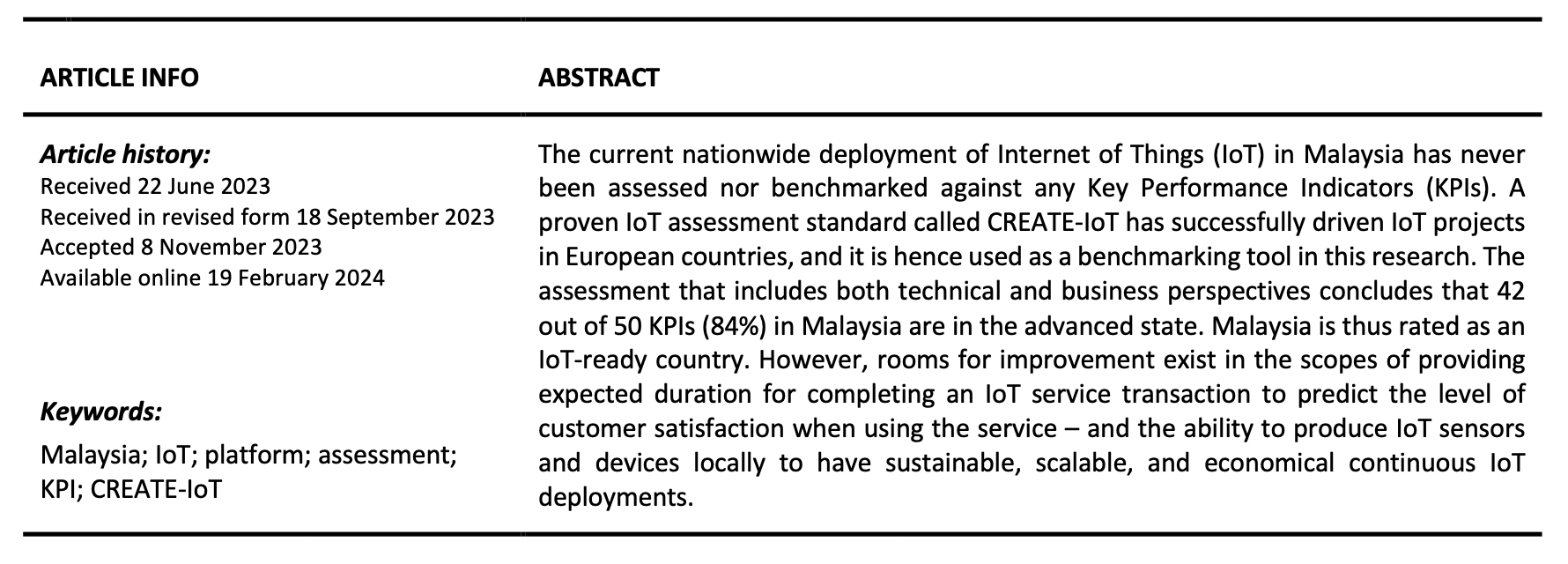Assessing Malaysia’s Internet of Things (IoT) Readiness Based on CREATE-IoT Key Performance Indicators
DOI:
https://doi.org/10.37934/araset.40.1.4554Keywords:
Malaysia, IoT, platform, assessment, KPI, CREATE-IoTAbstract
The current nationwide deployment of Internet of Things (IoT) in Malaysia has never been assessed nor benchmarked against any Key Performance Indicators (KPIs). A proven IoT assessment standard called CREATE-IoT has successfully driven IoT projects in European countries, and it is hence used as a benchmarking tool in this research. The assessment that includes both technical and business perspectives concludes that 42 out of 50 KPIs (84%) in Malaysia are in the advanced state. Malaysia is thus rated as an IoT-ready country. However, rooms for improvement exist in the scopes of providing expected duration for completing an IoT service transaction to predict the level of customer satisfaction when using the service – and the ability to produce IoT sensors and devices locally to have sustainable, scalable, and economical continuous IoT deployments.
Downloads





























